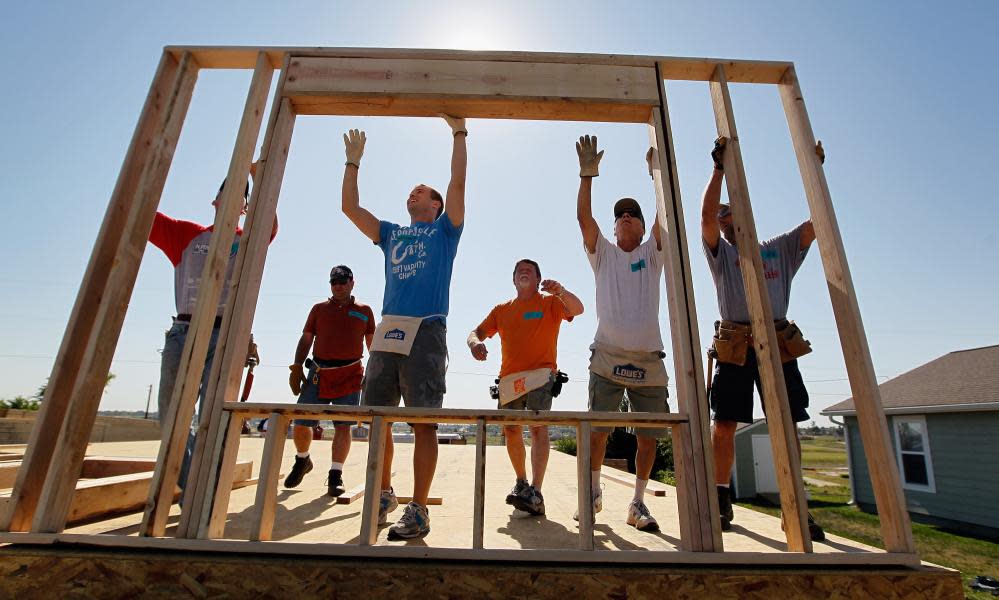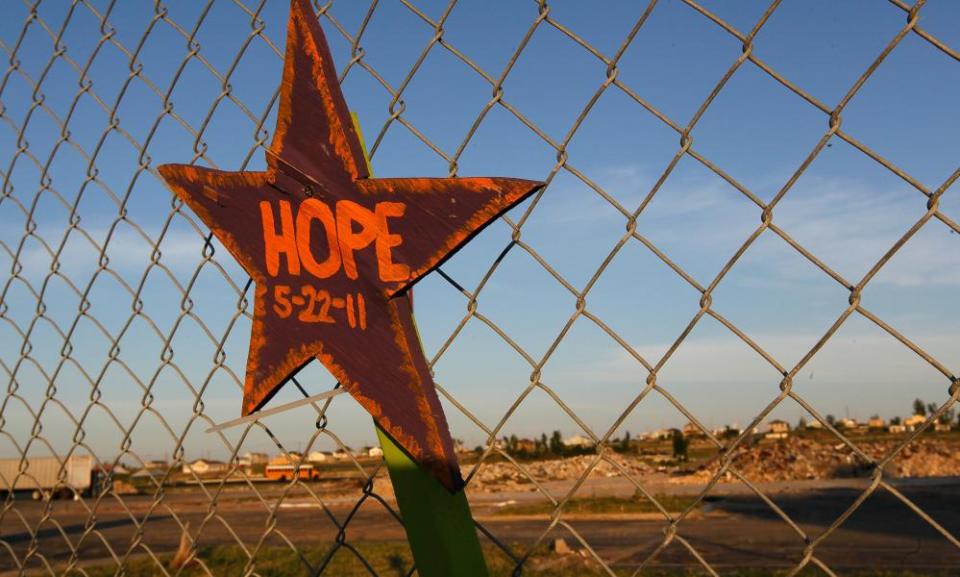‘Once-in-a-lifetime opportunity’: the stunning comeback of a tornado-wrecked town

Joplin, Missouri, was left unrecognizable after the 2011 disaster. Its recovery offers lessons for other communities
The tornado struck Joplin, Missouri, in May 2011 with such fury that afterward, even those who had lived here their entire lives struggled to recognize it.
The nearly mile-wide storm wiped away entire neighborhoods and killed 161 people in less than an hour. It felled trees, leveled buildings and flung power lines and vehicles all over the roads with winds of more than 200mph.
“We lost all our landmarks,” said Ryan Stanley, who was born in Joplin and serves as its mayor. “I was looking at our church and didn’t recognize it.”
But more than a decade later, Joplin’s transformation has been a positive one. A locally led recovery effort has created a thriving city with a larger population, new educational institutions, more businesses and thousands of houses that are better able to withstand extreme weather. Joplin has managed to achieve an often elusive post-disaster goal: not just restoring what was there before, but building a more resilient community.
As the climate crisis intensifies natural disasters, residents here say Joplin offers crucial lessons in how cities can recover and how the US can better prepare. Whether it be towns leveled by wildfires in the west, or by tornadoes like the ones that hit Kentucky last month, catastrophe can also present an opportunity to improve.
Jane Cage, a small business owner who became a leader of Joplin’s rebuilding efforts, says communities face a choice between rebuilding as quickly as possible, often the same way things were before, or taking the time to plan and build in a more resilient way.
“People want to return to normal,” she said, “but at the same time the disaster very often presents a once-in-a-lifetime opportunity for a community to build back better.”

A citizen-led effort that solicited feedback
By the time it dissipated, the 22 May 2011 tornado was among the deadliest in US history. The storm had violently torn through Joplin, killing people seeking refuge wherever they could find it, such as a Pizza Hut manager who shepherded people into the restaurant’s freezer and a family scrambling for safety inside a Home Depot. It had destroyed a third of the city, including a hospital and several schools, and displaced more than 9,000 residents.
The recovery ahead was monumental: Joplin had lost 4,000 homes, more than 500 businesses and critical infrastructure such as segments of the sewage system. The storm affected everyone in the city of 50,000 in some way, and took a toll on mental health. Eighteen people died by suicide after the tornado, said Stephanie Brady, the executive director of the Community Clinic of Southwest Missouri, who co-chaired the long-term recovery team. Calls about domestic violence grew in the first year.
The scale of the catastrophe was so staggering, federal officials warned the city it should expect to lose at least 25% of its population.
But the city insisted on a message of unrelenting hope and optimism for its future. Residents mobilized from the earliest moments, bringing injured people to safety and cleaning streets. Volunteers showed up in large numbers. And Joplin had an advantage, Brady said – it was a town built on strong connections.

“We have a spirit in our community that we are going to work together,” she said. “Our city works well with our county, the city works well with the hospitals.” Officials and residents were quick to organize, helping displaced residents secure housing, supplies and mental health support.
Another key to recovery was soliciting feedback about what people wanted the new Joplin to look like. Committees such as a citizen advisory team, chaired by Cage, were formed to seek input. Residents had a vision: a community with more parks, trails and sidewalks, which the city incorporated into its recovery plan.
“After a disaster that’s the government’s focus: we’re going to get you back to where you were,” Brady said. “We said: ‘we’re gonna use this as an opportunity to be better than we were before’.”
‘They didn’t just wait for Fema’
In Joplin, rebuilding took place at a rapid pace, with an average of five houses built a week since May 2011, according to city figures. More than 182,000 people volunteered in the town, including building hundreds of homes.
Those involved with the recovery efforts say that by harnessing federal funding and the national spotlight it gained during the early days of the tornado, the city was able to grow. Cage and Brady point to new parks, an art center, a medical school and incoming dental school as indicators of how Joplin has changed.

Officials also updated design standards so that houses would be better able withstand extreme weather, and schools could provide shelter to residents in the event of another tornado.
“All of these things came out of looking at how we make our community better,” Brady said.
Most businesses reopened, and more than 300 new businesses opened between May 2011 and February 2016, according to the city chamber of commerce.
The city’s immediate organizing played an important role in its success, said Robert Olshansky, an expert in post-disaster recovery.
“It was a huge tornado that took out lots of different parts of Joplin. It affected businesses, it affected the economy, it affected a lot of vulnerable people,” Olshansky said. “What was impressive is, a place that had never really been through this before, they self-organized very effectively. They took control. They didn’t just wait for the state emergency management agency or Fema.”
Not every community can rebound in the same way, Olshansky cautions. Small towns that were declining before a disaster will probably return as smaller, still-declining places unless they can find a formula that works for them, he added.
In Paradise, California, where affordability and natural beauty drew people to the area, increasing costs and severe wildfire damage have deterred some residents from returning, though the community has acted admirably in its recovery efforts, Olshansky said.
Joplin’s rebuild was not without error. The city partnered with a master developer run by two men the US Securities and Exchange Commission had already accused of misrepresenting investments. The firm failed to deliver and Joplin took the company to court trying to get back more than $1m, the Springfield News-Leader reported.
“I would encourage other communities to be very careful of who they partner with,” Stanley said. “It was a frustration and an embarrassment.”
Leaders of the rebuild efforts have sought to share their lessons with other cities – Cage now teaches at the Fema Institute about the role of community in disaster. Those in Joplin and outside it see the city as an important example of what’s possible.
In the years since, Brady helped found the Disaster Leadership Team, which travels to different communities to aid them in developing a recovery plan. The team has deployed to Texas after Hurricane Harvey and to Paradise after the Camp fire, where they’ve offered up their own experiences.
“You have to know your neighbors, you have to work together, you have to not bring ego into it. We had things we wish hadn’t happened, things we wish we had done differently,” Brady said. “But communities can recover.”
• In the US, the National Suicide Prevention Lifeline is at 800-273-8255 and online chat is also available. You can also text HOME to 741741 to connect with a crisis text line counselor. In the UK and Ireland, Samaritans can be contacted on 116 123 or email jo@samaritans.org or jo@samaritans.ie. In Australia, the crisis support service Lifeline is 13 11 14. Other international helplines can be found at www.befrienders.org

 Yahoo Movies
Yahoo Movies 
